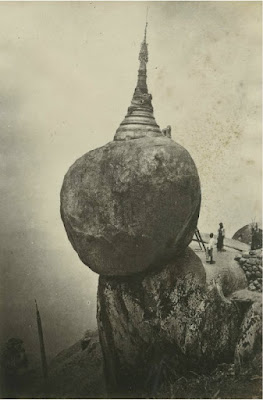First time I heard of something like “natural places” was some fifteen years ago at a conference in Slovenia. Several, mostly young researchers were proud to demonstrate an existence of non-man-made features on their sites, features that apparently gained a symbolic value before or during human habitation. For instance, trees which were incorporated in Neolithic ritual arrangements (henge monuments, if I recall correctly) or rock outcrops that seemed to have attracted special attention in the past. At first sight, the concept of natural place doesn’t seem particularly ground-breaking; in the past, natural features inspired a wide range of symbolically charged responses, such as mountaintop sanctuaries (e.g. on Crete), depositions of artefacts in springs and rivers (e.g. the source of the Seine), or sacred forests that are well known from literary sources. I got intrigued, nevertheless, by an opportunity to introduce the concept of nature in archaeology.

A “natural place” – the opposite of which would be an “unnatural” one ? – is perhaps somewhat clumsy. It wouldn’t make much sense for geographers who simply study all meaningful places. However, the character of being natural clearly varies between places. Perhaps Piazza Navona, with its fountains and all, is less “natural” than a vineyard in Tuscany, but both of these places exist in particular topographic settings and both are related to particular visions of nature. So it may turn that the concept of a place being more or less natural is primarily reflecting a specific view of nature held by scientists, namely the occidental ones. But this would be to miss the whole point.
Reading through the book that initiated all the buzz, The Archaeology of Natural Places by Richard Bradely, it becomes clear that the basic idea is methodological – how can archaeologists study past societies in their unaltered, yet symbolically charged landscape? Archaeologists are, indeed, much concerned with distinction between the man-made and the natural: is the feature I’m excavating an old animal burrow or an ancient pit, is the terrace on which the site is located made by human design or by alluvial deposition, etc. First we ascertain the cultural character of archaeological features, and then we proceed to deploy our favourite theory. However, this way of thinking puts archaeologists at danger of defining human culture in opposition to its environment.
The concept of natural places is not really about the culture vs nature debate but rather about translating particular situations, namely those where unaltered natural features were given special attention, into archaeological discourse of “sites” and “places”. This is an important point because it enables us to study the relationships past societies had with their environment beyond simple functionalism (namely, the exploitation of resources). Crucially, this concept does not demand to abandon fundamental notions of culture as opposed to nature, that is, we may continue to focus on particular “sites” of human action. First we separate – e.g. a fire pit and a wildfire, a burial mound and a geological anomaly – and then we try to understand the interplay of these “cultural” places in their “natural” setting. This is fundamental to the discipline and a direct philosophical critique of our inherent “naturalism” is rather unproductive.
But what about situations when nature and culture cannot be easily separated? Bradley is focused either on ritual places or on particular and imposing topographies, but what about ordinary agricultural fields or simple habitations? Take an ordinary settlement, a village, for example. There is a range of environmental factors that had to be taken into account by its founders. Is there enough productive land in the vicinity, is the site prone to flooding, are there other settlements in the neighbourhood, etc.? Archaeologists are particularly happy when they are able to prove that not all environmental factors were respected and that some mysterious “symbolic” (or at least “social”) reason also played a certain role. However such discourse is, again, pitting nature vs culture. Archaeologists define their subject-matter as non-nature and confrontational perspective is unavoidable.
I believe that the most important contribution of the idea of natural paces to archaeology would lie in an opening of a non-confrontational approach. Archaeology of nature is not an archaeology of environment: it’s an archaeology of environmental knowledge. We’re not interested in physical properties of an environment alone, but in human actions in the environment, and these actions were necessarily premeditated. Why not, then, embark upon the problem of the ways in which the environment may have been knowledgeable? This should take into account traces of human land use, but the main topic would be the natural world. Crazy idea ? At the moment, I’m fiddling with so-called space syntax, an approach in the analysis of spatial configurations of the urban environment and their impact on social life. Memorability and simplicity are particularly important qualities of urban spaces, used and navigated by a multitude of people with limited knowledge of the overall layout. We can, then, transfer these insights to the study of nature. This would entail modelling the nature as it would have been known, given a specific configuration of archaeological sites: finding memorable routes or impressive sights, distinguishing between complex and simple, understandable terrain, etc. Work in progress…
Bibliography
R. Bradley: An Archaeology of Natural Places, Routledge, 2000.
